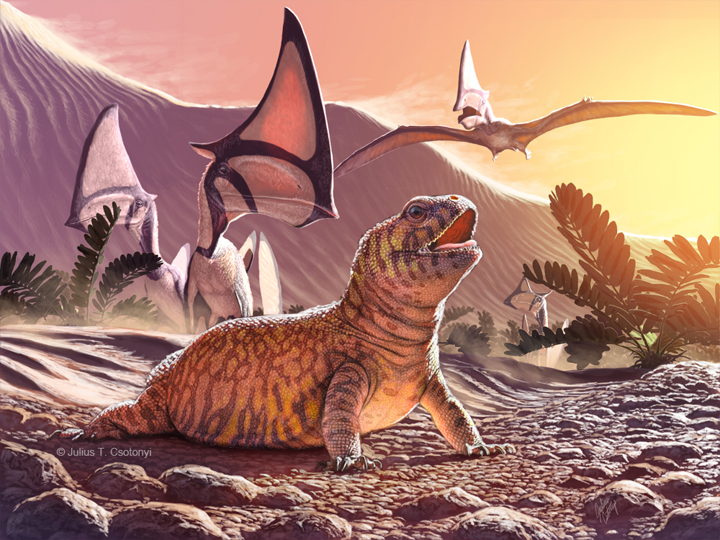TORONTO – Canadian paleontologists have discovered an important new species of lizard in Brazil that may lead to a better understanding of how lizards became distributed around the planet.

READ MORE: New horned dinosaur discovered in Alberta
The new species, named Gueragama sulamericana is about 80 million years old and provides a crucial link between two different types of lizards.
And it all comes down to their teeth.
Most of the 1,700 species of iguanas are mostly limited to the New World (ie. North America), mainly from the southern United States to the tip of South America. However, the closest relatives of the iguana — such as chameleons and the bearded dragon — are found in the Old World, such as Europe.
And there’s a big difference between the two types: The New World lizards are acrodontan iguanians, meaning that the teeth of these lizards are fused with the top of the jaw. The Old World lizards were non-acrodontan.
But this new species is the first acrodontan found in the Old World.
This means that both of these distinct types of iguanians were distributed around the world before the super-continent of Pangaea broke apart for good, forming the landmasses we know today.
About two hundred million years ago Pangaea broke apart, and Gondwana — South America, Africa, Australia, India — began its journey across the ocean.
“South America remained isolated until about five million years ago. That’s when it bumps into North America, and we see this exchange of organism north and south,” Michael Caldwell, co-author of the study and professor at the University of Alberta, said.
“It was kind of like a floating Noah’s Arc for a very long time, about 100 million years. This is an Old World lizard in the new world at a time when we weren’t expecting to find it.”
This discovery was a serendipitous one. The only reason the fossils were found at all was because other palaeontologists had discovered them among the fossils of a pteranodon in the municipality of Cruzeiro do Oeste in Southern Brazil. It’s believed that the group of fossils were washed together during a large flood in the area.
The palaeontologists contacted the primary author of the study, Tiago Simoes, one of Caldwell’s graduate students. And the two “lizard experts” headed out to the region.
Caldwell is excited about what this could contribute to the collective knowledge about lizards.
READ MORE: Little-known Ontario company supplies world museums with dinosaur skeletons
“Age of rocks makes it pretty clear that what we understood in the past wasn’t much,” said Caldwell. “South America’s story has a lot to reveal.”
Caldwell said that he hopes his discovery leads to much more investigation on how these types of lizards were distributed across the globe.
“You get a whole pile of new questions,” Caldwell said. “That’s what’s really exciting about this — it’s just the tip of the iceberg.”


Comments